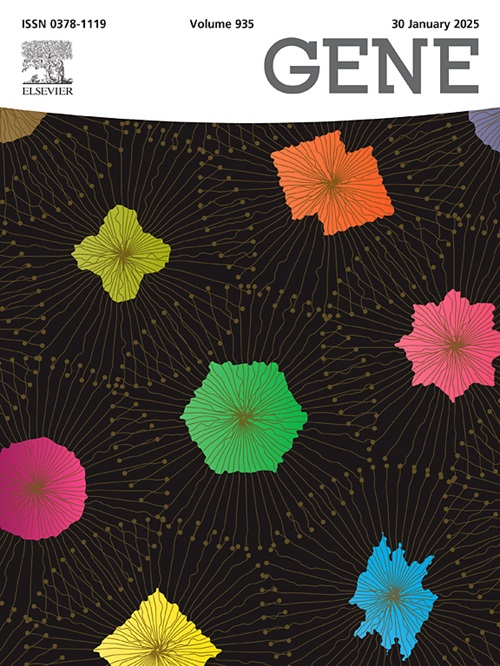Association of the Rs2070075 GALT gene variant with Iranian primary ovarian insufficiency patients
IF 2.4
3区 生物学
Q2 GENETICS & HEREDITY
引用次数: 0
Abstract
Purpose
Primary ovarian insufficiency (POI) is ovarian follicle deficiency causing menstruation interruption before 40. GALT gene’s defect can lead to POI besides galactosemia. Due to the association of GALT’s rs75391579 variant with POI in galactosemia and its presence in the Iranian general population, we aimed to determine its association with POI in Iranian patients.
Materials and methods
The blood DNA of 100 idiopathic POI patients underwent Polymerase Chain Reaction (PCR) and Sanger sequencing. Chi-square test was used as statistical analysis (p-value < 0.05). Frequencies were compared to Iranome database as the Iranian general population, and with Minor Allele Frequency (MAF) and the Highest MAF.
Results
The exonic rs2070075 C > T, and the intronic rs2277202 and rs41274867 G > A variants were detected. The genotype and allele frequencies of the rs2070075 were significantly different from the Highest MAF (p = 0.037, p = 0.011). The variants rs2277202 and rs41274867 showed significant differences compared to MAF (p-value < 0.001), but not when compared to Iranome and the highest MAF. The rs75391579 was not found in the studied patients.
Conclusion
The homozygous TT genotype of rs2070075 in one patient, whose mother with the same genotype experienced early menopause at 39, seems correlated with Iranian POI patients. As the rs2070075 has not been reported in POI so far, further investigation is recommended.
Rs2070075 GALT基因变异与伊朗原发性卵巢功能不全患者的关系
目的:原发性卵巢功能不全(POI)是指40岁前卵巢卵泡功能不足导致月经中断。GALT基因缺陷除可导致半乳糖血症外,还可导致POI。由于GALT的rs75391579变异与半乳糖血症POI的关联以及其在伊朗普通人群中的存在,我们旨在确定其与伊朗患者POI的关联。材料与方法:对100例特发性POI患者的血液DNA进行聚合酶链反应(PCR)和Sanger测序。结果检测到外显子rs2070075 C > T,检测到内含子rs2277202和rs41274867 G > A变异。rs2070075的基因型和等位基因频率与最高MAF有显著差异(p = 0.037,p = 0.011)。与MAF相比,rs2277202和rs41274867变异存在显著差异(p值 )。结论:1例患者的母亲在39岁早期绝经,其rs2070075纯合TT基因型似乎与伊朗POI患者相关。由于rs2070075目前尚未在POI中报告,建议进一步调查。
本文章由计算机程序翻译,如有差异,请以英文原文为准。
求助全文
约1分钟内获得全文
求助全文
来源期刊

Gene
生物-遗传学
CiteScore
6.10
自引率
2.90%
发文量
718
审稿时长
42 days
期刊介绍:
Gene publishes papers that focus on the regulation, expression, function and evolution of genes in all biological contexts, including all prokaryotic and eukaryotic organisms, as well as viruses.
 求助内容:
求助内容: 应助结果提醒方式:
应助结果提醒方式:


